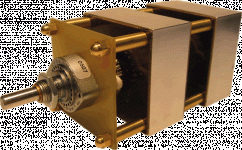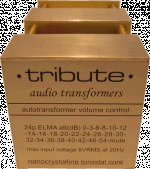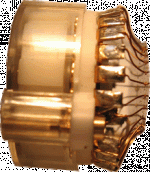or another inductive based on elma
happen to see build on dutch forum with this one
Tribute - The final word in audiotransformers
+/-435 euro, built to order (+/-3 months waiting)
happen to see build on dutch forum with this one
Tribute - The final word in audiotransformers
+/-435 euro, built to order (+/-3 months waiting)
Attachments
From reading, I know both of you to be talented designers. Lets not make a question of choice turn into anything else. There are plenty of examples for both cases and preferences. At a high quality level, we are talking about flavors, not quality. I have heard amps with outstanding numbers that suck and amps that are "musically" crafted that sucked and needed better engineering. Tomato vs tomato.
Hi Guys,
many thanks for that useful technical information and suggestion.
There remain some open questions about the transformer solution in my mind
I want to attenuate balanced signals, will the Auto-Transformer work ?
If a transformer is used to attenuate, what happens with the small DC Offset on the input ? I guess it will not transferred to the Output ? So it is possible to keep the Couple C out of the system ?
Thanks
Regards
Marcus
many thanks for that useful technical information and suggestion.
There remain some open questions about the transformer solution in my mind
I want to attenuate balanced signals, will the Auto-Transformer work ?
If a transformer is used to attenuate, what happens with the small DC Offset on the input ? I guess it will not transferred to the Output ? So it is possible to keep the Couple C out of the system ?
Thanks
Regards
Marcus
For balanced you need four auto-transformers.
Oh.. ok, that's heavy load of wallet
What is with 'normal' wound att. transformers like
SOWTER ATTENUATOR TRANSFORMERS TVC VOLUME CONTROL
Regards
Marcus
For balanced you need four auto-transformers.
If they are designed for single ended, yes.
If they were designed for balanced use that would not be the case.
(still expensive IMHO)
DC offset is a problem for certain types of trafo - mumetal cored without an air gap are the most sensitive. Coupling caps recommended for these. I wind my own trafos on ferrite (SMPSU style) cores, they're only expensive in terms of time spent as the parts (enamelled copper wire, cores) are very cheap. They do have one disadvantage over the more expensive metal-cored ones - their primary inductance tends to be a bit on the low side, whether this is a problem in practice depends on the driving circuit. I haven't found it to be anywhere near a show-stopper and I air-gap mine which makes matters worse...
DC offset is a problem for certain types of trafo - mumetal cored without an air gap are the most sensitive. Coupling caps recommended for these. I wind my own trafos on ferrite (SMPSU style) cores, they're only expensive in terms of time spent as the parts (enamelled copper wire, cores) are very cheap. They do have one disadvantage over the more expensive metal-cored ones - their primary inductance tends to be a bit on the low side, whether this is a problem in practice depends on the driving circuit. I haven't found it to be anywhere near a show-stopper and I air-gap mine which makes matters worse...
Thanks for you explanation. Could you give more details to understand what are the problem of DC offset ? Magnetization ? How many DC offset usually a problem ?
But at least the DC offset not tranfered to the output, or i'm wrong ?
Contact Dave Slagle of Intact Audio....
I originally had a resistive volume control built by Ric Schultz. That device used a Vishay resistor in the signal path with multiple metal film resistors shunting the signal to ground. It was a very nice passive volume control.
I then tried an autoformer that Dave Slagle winds on a high nickel core. Wow, it was amazing. I am quite confident that it will beat any resistor-based passive volume control, and not by a little bit either. I recall that Kurt Strain took a pair of Slagle's autoformers to a guy's house to compare them to his $8000 preamps and by the reports, the two were about equal. The autoformer was more transparent and the active preamp was somewhat more dynamic. There are tradeoffs. But the Slagle autoformers are only a few hundred bucks for a pair. Not bad.....
Lester
I originally had a resistive volume control built by Ric Schultz. That device used a Vishay resistor in the signal path with multiple metal film resistors shunting the signal to ground. It was a very nice passive volume control.
I then tried an autoformer that Dave Slagle winds on a high nickel core. Wow, it was amazing. I am quite confident that it will beat any resistor-based passive volume control, and not by a little bit either. I recall that Kurt Strain took a pair of Slagle's autoformers to a guy's house to compare them to his $8000 preamps and by the reports, the two were about equal. The autoformer was more transparent and the active preamp was somewhat more dynamic. There are tradeoffs. But the Slagle autoformers are only a few hundred bucks for a pair. Not bad.....
Lester
I originally had a resistive volume control built by Ric Schultz. That device used a Vishay resistor in the signal path with multiple metal film resistors shunting the signal to ground. It was a very nice passive volume control.
I then tried an autoformer that Dave Slagle winds on a high nickel core. Wow, it was amazing. I am quite confident that it will beat any resistor-based passive volume control, and not by a little bit either. I recall that Kurt Strain took a pair of Slagle's autoformers to a guy's house to compare them to his $8000 preamps and by the reports, the two were about equal. The autoformer was more transparent and the active preamp was somewhat more dynamic. There are tradeoffs. But the Slagle autoformers are only a few hundred bucks for a pair. Not bad.....
Lester
Many thanks for share your experience.
A lot of positve reports about transformer solutions. It seems i need to build a µC / relay based tranformer attenuator
Someone has experience with the Swoter Transformator here ?
Could you give more details to understand what are the problem of DC offset ? Magnetization ?
Core saturation so yeah 'magnetization' would work too.
Deoends on the trafo design and core material. Can be as low as a few mV.How many DC offset usually a problem ?
Right, no offset possible on the output, after all the trafo just looks like a resistor at DC.But at least the DC offset not tranfered to the output, or i'm wrong
in the meantime you have permanently damaged the transformer.........at least the DC offset not tranfered to the output.......
The manufacturer may be able to demagnetise it back to "as new" condition.
A transformer is the best sounding attenuator.
…
This is in accord with my experience.
happen to see build on dutch forum with this one
Tribute - The final word in audiotransformers
+/-435 euro, built to order (+/-3 months waiting)
I own the Tribute autotransformers based IVC (Inductive Volume Control).
Superb sound, better than any active preamp that I ever heard.
in the meantime you have permanently damaged the transformer.
.....
that's hardly the truth , as long you don't damage enamel of wire
If the transformer can't be made to perform to specification after applying the unwelcome DC, then it is permanently damaged.
Just took an autoformer and measured 121 hy's of inductance.
applied 100ma of DC current.
removed current and measured 121 hy's of inductance.
No damage done.
dave
If the transformer can't be made to perform to specification after applying the unwelcome DC, then it is permanently damaged.
unwelcome DC for xformer is in range of frying enamel of wire .
ever read olde books , or maintain/service manuals , where geezers wrote about regular degaussing of input signal xformers of mixing consoles , preamps etc. ?
degaussing of these - strictly to maintain top notch performance ; made with crazy high AC signal ........ un-powered and excluded rest of signal chain , of course .
Last edited:
- Status
- This old topic is closed. If you want to reopen this topic, contact a moderator using the "Report Post" button.
- Home
- Source & Line
- Analog Line Level
- Attenuator for Passive pre amp, best sounding solution



